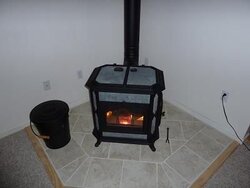Nonprophet
Minister of Fire
logger said:Nonprophet said:logger said:There’s really no cat or non-cat issue becasue neither stove has one.
Any bad reviews of the Jotul are usually from people who do not know how to properly operate their stove, wood, or stovepipe... period. Most of my friends and family were so fond of ours that they have since gotten their own Joutuls and are extrememly happy with them. I got mine because I liked a friends. The front door does let ash out (we use the sidedoor), but its easily fixed (just search how on this site, costs less than 5 bucks). The air intake can get hot, but most people I know have gloves nearby, so searching for something shouldnt take time, duh.
It's my understanding that the Fireview IS a cat stove.....
Oslo's have their fans for sure, but there are experienced wood burners with dry wood and good chimney setups (like us) who just don't like the Oslo. There's really no need to insult those who don't like the same stove you do......
NP
Thought the Fireview was a cat, but NH Wood's 1st post confused me for a second. Didnt mean to insult anyone, just stated that using a glove isnt too hard to do for adjusting the intake. Not sure why anyone would put down the Oslo with good wood and a good pipe setup.. again, just my opinion.
If you've got 25' plus of chimney, an Oslo can be a good stove with enough draft. The other issues like ash falling out, no andirons, and the air control lever being too hot to touch are easily remedied by Jotul and are long-standing complaints from many Oslo users. Glad you're happy with yours--lots of folks are.
NP




